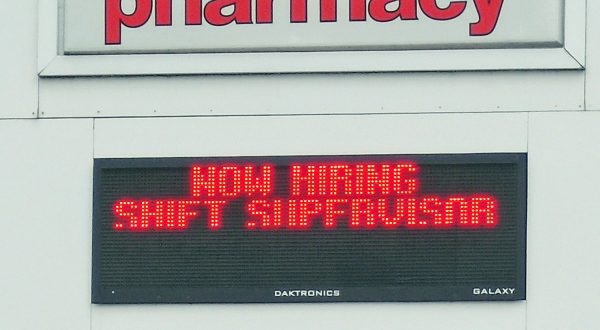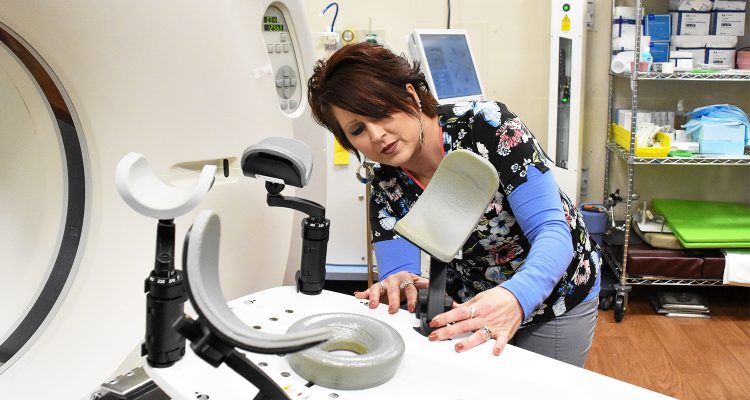Here’s a quick look at what is going on in this new decade, according to business and employment experts with state government and West Virginia University:
• The growth runs the employment gambit. Certain professional jobs are so red hot, particularly those in health care, that workers are beginning to come here from other locations. The trades are also doing well and paying well, especially those associated with the oil and gas sector. And, even retail and food-service jobs that traditionally pay less have wages that are now rising well above minimum wage.
• Demand is so high in some areas that employers are beginning to tap populations that have been underrepresented in the workforce — the disabled, caregivers who need unusual hours, retirees and teens looking for that first job.
Is all this a blip of worker joy? Or, is it a boom — an economic trend big enough to keep recent graduates here or even lure natives home?
Only time will tell, according to experts watching the changes.
CRUNCHING THE NUMBERS
John Deskins, director of West Virginia University’s Bureau of Business and Economic Research in Morgantown, put a timeline to the change. “Economic growth has been pretty good over the past three to four years in the Wheeling area.”
“Economic growth has been pretty good over the past three to four years in the Wheeling area.” — John Deskins, director of West Virginia University’s Bureau of Business and Economic Research
Despite a slight employment dip in recent months because of the completion of the installation phase of oil and gas operations in Ohio County, Deskins said the local unemployment rate continues to hover at 5 percent.
As that rate measures only people who are actively looking for work — and will never reach zero — he noted it’s a number that really signals something for both workers and employers.
“The labor market is tight.”
“Tight” means at least some hiring becomes very visible, he said of why “Now Hiring” signs are posted on entry doors or flutter from banners at many retail outlets and restaurants. It also means job sites such as Indeed.com will have lots of listings on the less-visible end.


Anecdotal evidence from such job postings suggests even many entry-level jobs are now paying $9 to $11 an hour — above West Virginia’s minimum wage of $8.75 an hour. But it’s tough to get a clear picture of earnings just now, he added, as oil and gas jobs paying $80,000 to $100,000 a year are skewing the average to the high end.
Deskins cautioned that a flurry of hiring and rising wages is not enough to indicate if the city and county are in a true boom cycle.
“If you have an economy that really is doing well on the long run, you get people to move into that area,” he explained. “But that happens over a long time.”
Currently, he said, the only areas of West Virginia that are seeing consistent economic growth and corresponding worker inflow are the North Central region (the Clarksburg, Fairmont, Morgantown corridor) and the Eastern Panhandle. But he’s watching the Ohio Valley.
“It could be starting in the Wheeling area,” Deskins said.
LOCAL NEEDS NOW
Vincent Azzarello, senior director of human resources at Wheeling Hospital, said that organization and other health care entities are already seeing demand outpacing the supply of at least some workers. This is in spite of recent mega-shifts in county health care that include two hospital closures.
“Wheeling Hospital is always looking for qualified individuals to join our team. The job market for service labor is very tight in the Wheeling area,” Azzarello said. “Filling service positions has been very challenging. We interview a lot of candidates and we know other employers, especially in health care, are also struggling to find qualified applicants.”
Right now, registered nurses are in particularly high demand, he noted of a shortage that is national in nature and is forcing hospitals everywhere to get creative in attracting what workers there are.
“In addition to offering programs for experienced nurses, Wheeling Hospital works with local nursing schools to attract new graduates,” Azzarello said. “We offer on-site clinical rotations for students, which provides them the opportunity to complete their education, as well as the ability for us to recruit directly with these students.”

The hospital also has turned to offering incentives such as “sign-on bonuses, tuition reimbursement, increasing wages, performance bonuses, paid time off, etc.”
And, sometimes, he said recruiters must search for workers from outside the area, particularly for other clinical positions such as technologists for the cardiac catheterization lab and medical lab technologists.
He noted not all hospital jobs are medical, meaning Wheeling Hospital must also compete with businesses from other sectors of the economy for some hires.
WATCHING IN CHARLESTON
Joe Jarvis, data analyst for the state Department of Commerce’s Bureau of Employment Programs in Charleston, noted the projected need for health care workers is such that even the state Legislature is looking at that sector of the demand/supply curve this session.
Companion House and Senate bills introduced in late January are requesting a comprehensive study of projected labor force needs in the health care industry over the next 15 years. Health care is a major job source in the state, Jarvis said of one reason for Legislature interest. Indeed, WVU Medicine (which manages Wheeling Hospital and several other local institutions) has surpassed Walmart as the state’s largest employer. WVU Medicine now employs about 15,000 workers.
BOOTS ON THE GROUND
Speaking on behalf of another large employer that operates locally, Amy McCormick said no study is needed to demonstrate worker need at Kroger. As it is in many retail and food-service establishments in the county, hiring is ongoing there, according to the corporate affairs manager at company headquarters outside Columbus, Ohio.
Some stores, including the Mount de Chantal Kroger in Wheeling, set up hiring tables near front doors on a regular basis. “Our goal is to let folks know that we’re always looking for good people,” she said of such tactics sending a clear signal the business is ready to hire.
“Our goal is to let folks know that we’re always looking for good people.” — Amy McCormick, Kroger
In late January, only two positions were open at that store. McCormick said Kroger’s ace in the hole when it comes to staying staffed in a tight market is often flexibility. This is particularly true for people who want to work part-time or need unusual hours — often potential workers who are not officially counted as “looking” for employment in state data.
“It may be their first job; it’s a part-time job while they’re going to school or ‘I’m able to work in the evenings when my kids go to bed,’” McCormick said. She noted the company is also wide open to disabled workers, as long as they can do the job in question.
Beyond this broad population reach, McCormick said Kroger is mirroring Wheeling Hospital in upping incentives, as well. The company recently introduced a starting-wage increase and offers other perks such as health benefits for both full- and part-time employees, tuition reimbursement for employees who are attending college and product and service discounts.
Adding it all up, she believes Kroger’s employment tactics can work even in a boom cycle.
“I came for a job and stayed for a career,” she said of a company mantra that proved true in her own case. She began with Kroger as a 16-year-old.

A COMPLEX EQUATION
If a true boom is occurring, WVU’s Deskins said other employers may look outside the area — a reach that could include Wheeling natives who want to come home. They may also follow Kroger’s example in tapping parts of the current population that have been underrepresented in the workforce.
Finding these latter workers likely means taking a hard look at the state’s labor force participation rate, which measures what percentage of residents who are age 16 or older (and who are not in the military or incarcerated) are employed.
Nationally, the rate is 63 percent. In West Virginia, the rate is 54 percent, which ranks it 50th.
That ranking can look wholly negative at first glance, but Deskins said the state’s age pyramid is the major cause. West Virginia has a population that is more elderly than that of most states, he explained, meaning a sizable chunk of residents have aged out of the workforce to the point they are not coming back regardless of the economy.
Data projections fueled by the most recent U.S. Census shed more light on this, according to Jarvis, the state employment data analyst.
West Virginia has about 1.5 million residents who fall into the rate count, according to the census figures. Yet, only about 688,000 of those residents (45 percent of overall count population) are in the age range (mid-20s to mid-50s) considered nationally to be peak earning years.
These residents are working at a high rate — between 70 percent and 76 percent — but that doesn’t offset lower to no employment among the approximately 471,000 residents (31 percent of the count population) who are 55 or older.
Such details show how some facets of low labor force participation aren’t “fixable,” Deskins noted. But they also reveal areas that employers can tap if the need continues to grow.
As Kroger is already doing, he suspects there are ways that other sectors can engage residents who may not be working because they are caregiving, are in school or are disabled or ill. Opioid and other additions are other workforce participation issues that can be addressed, both Deskins and Jarvis said. Lack of transportation and, ironically enough, poverty come into play, as well, they added.
“We still have a lot of things that we need to work on — to improve — to achieve our full potential,” Deskins said of tackling non-employment that can be reversed.
Yet, however the labor force participation rate is viewed, he noted it is contributing to this being a good time for Wheeling residents who are ready, willing and able to work. This is particularly true for the youngest workers.
“There are those 17-year-olds who are considering whether or not to take on a job,” Deskins said of the first wave of Gen Z workers, whom census projections show are now working at a rate of about 34 percent. “A rising wage is going to make youth more inclined to go for it.”
• A long-time journalist, Nora Edinger also blogs at noraedinger.com and Facebook and writes books. Her Christian chick lit and faith-related non-fiction are available on Amazon. She lives in Wheeling, where she is part of a three-generation, two-species household.


